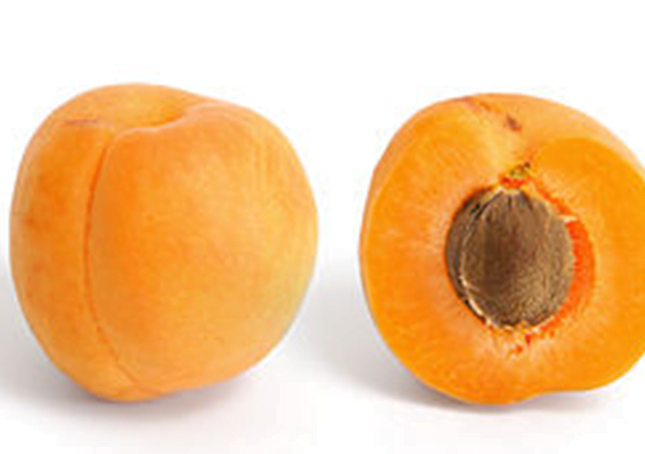Apricot

An apricot (US: /ˈæprɪkɒt/ (About this soundlisten), UK: /ˈeɪprɪkɒt/ (About this soundlisten)) is a fruit, or the tree that bears the fruit, of several species in the genus Prunus (stone fruits).
Usually, an apricot is from the species P. armeniaca, but the fruits of the other species in Prunus sect. Armeniaca are also called apricots.
Apricot first appeared in English in the 16th century as abrecock from the Middle French, aubercot, or later from Portuguese, albricoque.[2] The specific name armeniaca was first used by Gaspard Bauhin in his Pinax Theatri Botanici (1623), referring to the species as Mala armeniaca, “Armenian apple”. Linnaeus took up Bauhin’s epithet in the first edition of his Species Plantarum in 1753, Prunus armeniaca.
Apricots are species belonging to Prunus sect. Armeniaca. The taxonomic position of P. brigantina is disputed. It is grouped with plum species according to chloroplast DNA sequences,[4] but more closely related to apricot species according to nuclear DNA sequences.
The apricot is a small tree, 8–12 m (26–39 ft) tall, with a trunk up to 40 cm (16 in) in diameter and a dense, spreading canopy. The leaves are ovate, 5–9 cm (2.0–3.5 in) long, and 4–8 cm (1.6–3.1 in) wide, with a rounded base, a pointed tip, and a finely serrated margin. The flowers are 2–4.5 cm (0.8–1.8 in) in diameter, with five white to pinkish petals; they are produced singly or in pairs in early spring before the leaves.
The fruit is a drupe similar to a small peach, 1.5–2.5 cm (0.6–1.0 in) diameter (larger in some modern cultivars), from yellow to orange, often tinged red on the side most exposed to the sun; its surface can be smooth (botanically described as: glabrous) or velvety with very short hairs (botanically: pubescent). The flesh is usually firm and not very juicy. Its taste can range from sweet to tart. The single seed is enclosed in a hard, stony shell, often called a “stone” or “kernel”, with a grainy, smooth texture except for three ridges running down one side.
The most commonly cultivated apricot P. armeniaca was known in Armenia during ancient times, and has been cultivated there for so long that it was previously thought to have originated there, hence the epithet of its scientific name. However, this is not supported by genetic studies, which instead confirm the hypothesis proposed by Nikolai Vavilov that domestication of P. armeniaca occurred in Central Asia and China. The domesticated apricot then diffused south to South Asia, west to West Asia (including Armenia), Europe and North Africa, and east to Japan.
